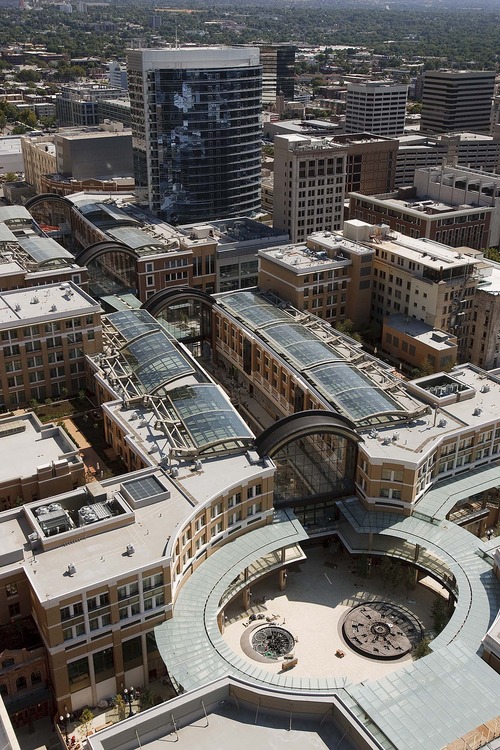This is an archived article that was published on sltrib.com in 2014, and information in the article may be outdated. It is provided only for personal research purposes and may not be reprinted.
State Auditor John Dougall, a conservative former lawmaker, will present a not-so-conservative study soon to his onetime colleagues finding that during the past decade, local governments may have collected $100 million less in property taxes than they are entitled to.
This warning of under-collection of taxes seems to fly in the face of the first-term auditor's 2012 campaign claim to be "frugal Dougall." But his spokeswoman says the new report isn't about politics or philosophy — it's about what the auditor's office has identified as a glaring error in the calculations used to set certified rates for local property taxes around the state.
"Our job," said spokeswoman Nicole Toomey Davis, "is to let the numbers speak for themselves."
She added that auditors simply identified an error in calculating the rates and are communicating it to policymakers. After that, "municipalities can work with their citizens as necessary" to determine the best policy going forward.
The upshot of the "significant error" discovered by the analysis is that tax collectors currently are double counting the amount that properly should be deducted from the calculation for reappraisal values in redevelopment areas.
Local governments with big redevelopment projects — such as Salt Lake City — are particularly hard hit by the error.
The report, released Monday and scheduled to be presented Wednesday to a legislative committee, says Utah's capital may have collected nearly $18 million less than it was entitled to since 2005, or on average of about $2 million annually. Salt Lake County likely under-collected by an estimated $50 million during the period.
"New growth was likely understated by a billion dollars annually statewide and improperly lowered property tax rates by roughly 0.01 percent each year," the report said. "Statewide, the lower rate reduced property tax revenue by an estimated $20 million in 2013, roughly 1 percent of annual property tax collections.
"During the last decade," it added, "the error in reappraisal likely caused over $100 million of improperly reduced property tax revenue."
Salt Lake City Mayor Ralph Becker said he asked Dougall for the review because the capital has been seeing a lot of new growth downtown and in Sugar House but was not seeing a corresponding increase in new revenue.
"We just couldn't make sense of why that was happening, " he said. "This has befuddled Salt Lake City for a very long time."
Becker praised Dougall for the in-depth audit that turned up the miscalculation that he characterized as a "miscommunication" between the Utah Tax Commission and county auditors in areas with redevelopment agencies.
"Salt Lake City taxpayers have been getting the benefit of a miscalculation," he said. "The revenues that had been coming into the city weren't what they should have been."
Last spring, the Salt Lake City Council, over Becker's veto, raised property taxes by 13 percent to garner $8 million in new property taxes.
Monday, the mayor said he would not comment on whether that tax hike would have been necessary if the miscalculation were not in play, referring the question to the council.
"But at the time of the council's consideration of the tax increase, I had wanted to take a look at our tax system and see what other revenues were available."
Council Chairman Charlie Luke said it's not possible to know whether the council would have raised taxes last year if those revenues owed had been collected.
"But it certainly would have taken the pressure off from where we were last year," he said regarding the city's long list of deferred maintenance on streets and parks.
In a written response to the study, Denny Lytle, property tax division director for the Tax Commission, appears to lay blame for the calculation error at the feet of counties.
"The property tax division sends out an annual letter to county auditors requesting data to be used in the certified tax rate process," he said. "The 2014 tax year data request letter did ask counties to verify that the reappraisal number used in the new growth calculation did not include reappraisal that was already reported in the redevelopment adjustment number."







